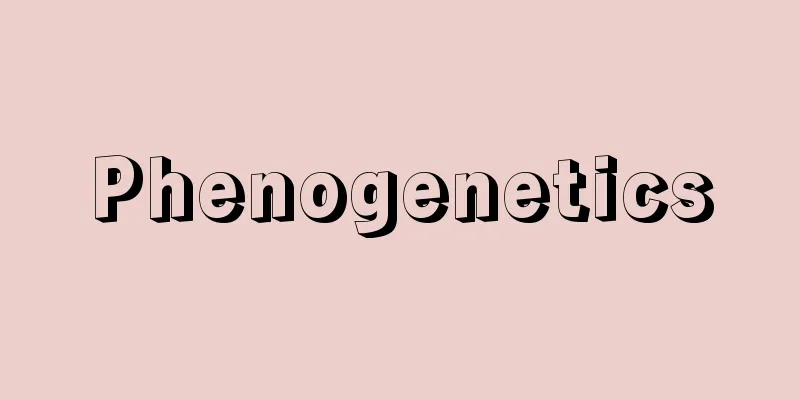Miki Nakayama

|
Year of death: February 18, 1887 Year of birth: April 18, 1798 (June 2, 1798) Founder of Tenrikyo. Born as the eldest daughter of the Maekawa family, a village headman in Yamabe County, Yamato Province (Tenri City, Nara Prefecture). At the age of 13, she married Nakayama Zenbei of Shoyashiki Village in the same county. The Nakayama family were landowners who also acted as middlemen for cotton and other products. Her hard work was recognized and at the age of 16, she was entrusted with all of the Nakayama household management. Over the course of 17 years, she had one son and five daughters, but lost her second and fourth daughters. In 1837, her eldest son, Hideji, suddenly complained of severe pain in his leg, so she asked a monk to pray for him and performed "Yokaji" (a ritual to raise the dead body of a Buddhist priest) on numerous occasions. During the Yokaji on October 23, 1836, Miki, who served as the priest, became possessed by a god. The god who descended upon Miki introduced himself as the "original god" and the "real god," and declared, "I came down from heaven to save the three thousand worlds. I want to take Miki's body as a shrine for the god. If you do not agree, I will destroy this family." Her husband had no choice but to accept, and the day Miki was first possessed by the god was later considered the day Tenrikyo was founded. After her husband's death, the Nakayama family fell into ruin, and in 1854, in the midst of living in poverty, Miki bestowed "Obiya-Kusashi" (the goddess of forgiveness) on her third daughter, who was about to give birth for the first time, with the promise that the god would protect her from the dangers of childbirth. She later gave this to other women who were suffering from taboos or dangers during childbirth, and became known as the "Goddess of Obiya." From around 1864, together with her fifth daughter, Kokan, who was an understanding supporter of Miki's faith, she actively provided "help" by ensuring safe childbirth and curing illnesses such as smallpox, and gained many followers despite the interference of priests and monks. In 1867, Miki began writing Mikagura Uta, a song-form counting the will of the Parent God Tenrin-Oh, and in 1869, she began writing Ofudesaki, her doctrine. Miki's teachings that "all humans, regardless of gender, are equal as children of God, and if we put aside evil intentions and strive to serve God, those who are oppressed and suffering under authority will be saved, and the ideal world of 'happy living' will be realized" matched the wishes of the common people during the Meiji Restoration at the end of the Edo period, and as the cult grew in influence, it came under severe oppression from the authorities. The cult's leaders tried to gain official recognition for its missionary work, but Miki maintained a stance of resistance. In the same year, Miki hoped to build a "Kanrodai" (a platform for receiving the miraculous medicine given by heaven when salvation is realized) on the grounds of the Nakayama family's "Jiba" as a place of God's creation of humanity, and attempted to create his own mythology, "Kofuki." However, in 1940, the Kanrodai under construction was destroyed by police, and this prompted him to stop writing "Ofudesaki." In February 1941, he was detained by police for 15 days for a group pilgrimage, which damaged his health, and in 1948 he was in critical condition. Miki asked the senior followers, "Is God more important, or is the law of the world more important?" and encouraged them to perform the "Kagura Duty," a ritual that accompanies music and singing and dancing, which had been banned by the police. He passed away at the age of 90, listening to the sounds of the Kagura Duty performed by the followers who were prepared to be detained. For the followers, Miki's life was a "model" of the way humans should live, and it is said that even after death, her soul remains at "Jiba" and continues to guide and save humans. <Works> "Ofudesaki" "Mikagura Uta" <References> "Manuscript of Tenrikyo Founder's Biography" edited by Tenrikyo Church Headquarters, "Founder" by Kojiro Serizawa, "Miki Nakayama Research Notes" by Hideo Yashima (Aoi Igeta) Source: Asahi Japanese Historical Biography: Asahi Shimbun Publications Inc. About Asahi Japanese Historical Biography |
|
没年:明治20.2.18(1887) 生年:寛政10.4.18(1798.6.2) 天理教の教祖。大和国山辺郡(奈良県天理市)の庄屋前川家の長女として生まれる。13歳で同郡庄屋敷村の中山善兵衛と結婚。中山家は綿などの仲買いもする地主であった。働きぶりを評価され16歳で中山家の所帯の一切をまかされる。17年間に1男5女をもうけるが次女と4女を亡くした。天保8(1837)年長男の秀司が突然足に激痛を訴えたため行者に祈祷を依頼し,いくたびも「寄加持」を行う。同9年10月23日の寄加持のおり加持台をつとめたみきは神がかり状態となる。みきに降りた神は「元の神」「実の神」と名乗り,「三千世界を助けるために天降った。みきの身体を神の社としてもらいうけたい。承知しなければこの家をつぶす」と宣告,夫もやむなく承諾する。みきが最初に神がかりしたこの日はのちに天理教立教の日とされる。夫の死後中山家は没落し,貧窮生活のなかでみきは安政1(1854)年初産を迎える3女に,神が安産を守護するとの「おびや許し」を授け,のちに産の忌み・危険に悩む他の女たちにも行い「おびやの神様」として評判になる。 元治1(1864)年ごろから,みきの信仰の理解者である5女のこかんと共に安産や疱瘡などの病気治しによる「たすけ」を活発に行い,神主や僧侶などの干渉にもかかわらず多くの信者を得る。慶応3(1867)年から親神「てんりんおう」の神意を数え歌形式の「みかぐらうた」,また明治2(1869)年から教義「おふでさき」を書き始める。「人間は男女のへだてなくみな神の子として平等であり,悪心を去り神への奉仕に努めれば,権力に虐げられ苦しんでいる者こそが救済され,『陽気暮らし』の理想世界が実現する」というみきの教えは幕末維新期の庶民の願いに合致し,教勢を伸ばしたがゆえに官憲から苛烈な圧迫を受けた。教団幹部は布教の公認を得ようとするが,みきは抵抗の姿勢を保つ。 同6年,救済実現のとき天から与えられる霊薬を受ける「甘露台」を,神による人類創造の場として中山家の屋敷地「ぢば」に築くことを願い,独自の神話『こふき』を作ろうとするが,同15年建設中の甘露台が警官によって破壊され,これを機に「おふでさき」の執筆をやめる。同19年2月信者の集団参拝を理由に警察に15日間拘留されたため健康を損ね,同20年危篤状態となる。みきは幹部信者たちに「神が大事か,世俗の法が大事か」といい,警察に禁止されていた,鳴りものに歌舞をともなう儀礼「かぐらづとめ」をするよう促す。拘束を覚悟した信者たちが行うかぐらづとめの音を聞きながら90歳で永眠した。みきの生涯は信者たちにとって人間の生き方の「ひながた」であり,その魂は死後も「ぢば」に鎮まり人間を導き救済し続けているとされる。<著作>『おふでさき』『みかぐらうた』<参考文献>天理教教会本部編『稿本 天理教教祖伝』,芹沢光治良『教祖様』,八島英雄『中山みき研究ノート』 (井桁碧) 出典 朝日日本歴史人物事典:(株)朝日新聞出版朝日日本歴史人物事典について 情報 |
Recommend
Kira Yoshisato - Purity and
…Since Mitsuyoshi's son Takayoshi (or Yoshita...
Student Council - gakuseijichikai
A self-governing organization of students who are...
Yankee Doodle
A beloved American song. It is also familiar in Ja...
Red rhododendron - Red rhododendron
...Akebono azaleas have five leaves that grow in ...
Akhmim (English spelling)
…In ancient times, it was called Pao, and it is t...
Folklore (English spelling)
Folklore refers to the totality of literature, mat...
Koivisto, M.
...Paasikivi (in office 1946-56) served two terms...
Probability space
…The probability of the sum event A = A1 ∪ A2 ∪… ...
Commonwealth of Dominica
Official name: Commonwealth of Dominica Area: 750 ...
Ertebolle (English spelling)
...However, in the later stages, they came into c...
Konrad von Soest
…German panel painting developed in various ways ...
Childhood Cancer - Childhood Cancer
So-called childhood cancer refers to pediatric ma...
Sand casting
...Needless to say, the former technique came fir...
Agricultural statistics
A general term for statistics related to agricultu...
Everything is painful - Issaikaiku
… [Basic Doctrines] What is the law (truth = teac...



![Kawai [village] - Kawai](/upload/images/67cb45b54be6e.webp)





